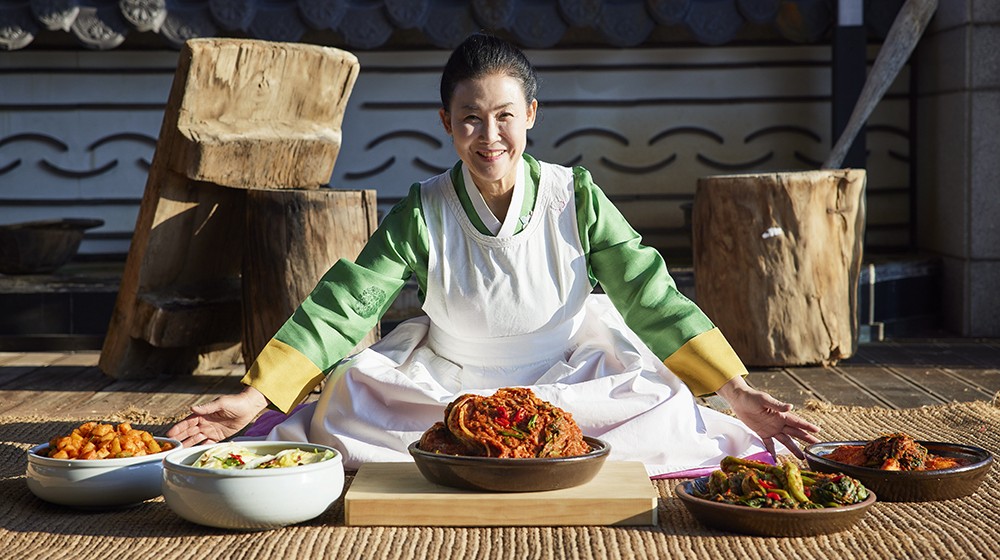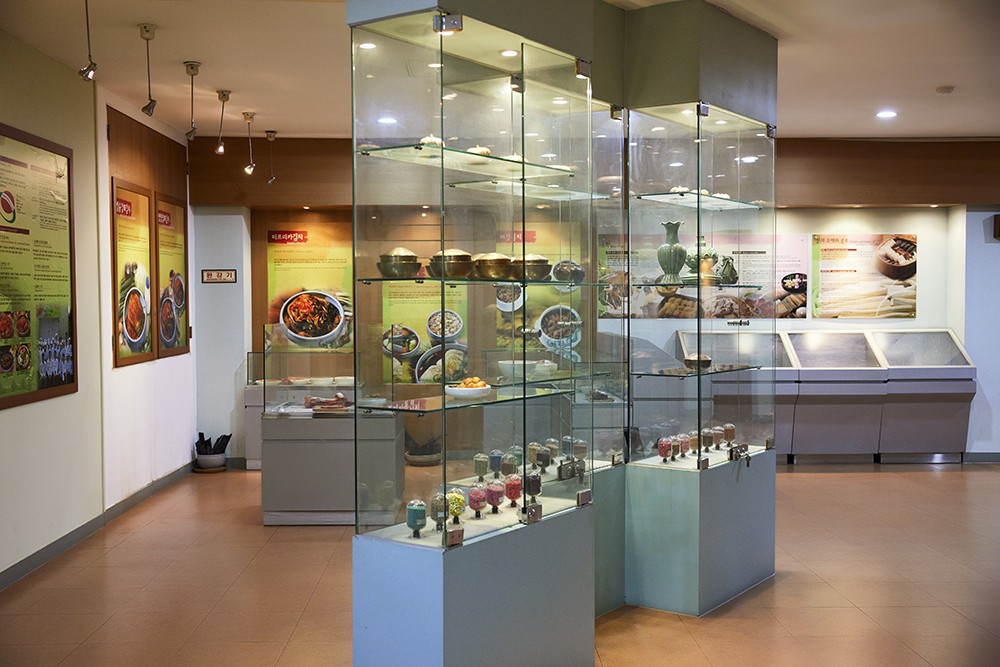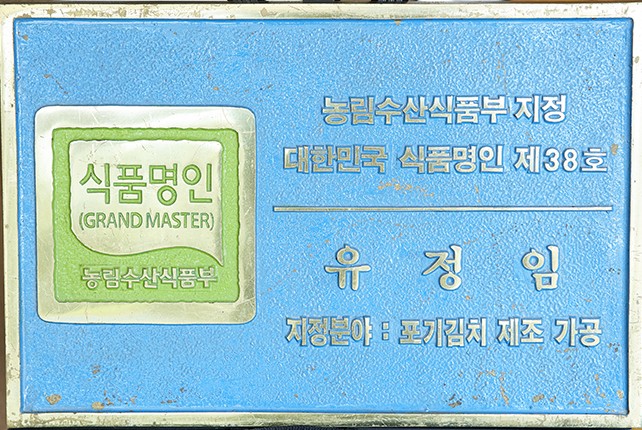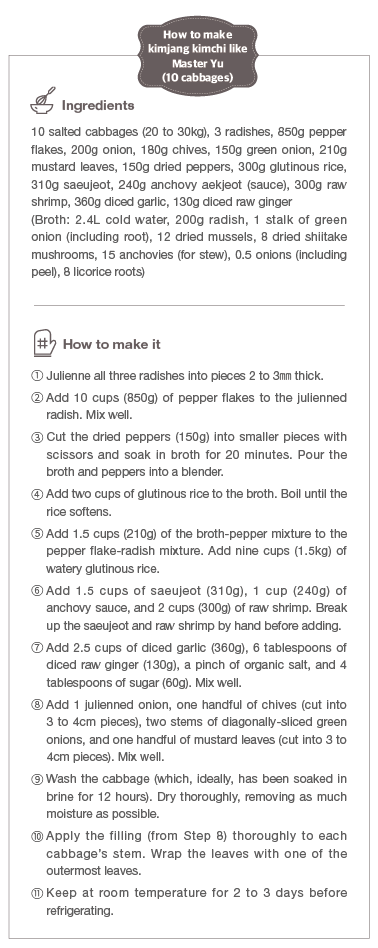한식 읽기 좋은 날
Vol 57. Fermentation and Kimchi
The Healthy and Deep Taste of Kimchi
HANSIK Master
November 22 is Kimchi Day. The day, which was chosen because it is the height of kimjang season and the numbers of the month and day indicate the 11 main ingredients and 22 health benefits of eating kimchi, was designated to promote the continuation of kimchi’s culture and improve the quality of kimchi sold worldwide. It also happens to be the birthday of Yu Jeongim, a Korean Food Master of pogi kimchi. Curious about the bond between this accomplished individual and kimchi, I took advantage of the upcoming kimjang season to visit Yu at Pungmi Foods’ headquarters in Suwon.
Article Seo Dongchul (Editorial Team) Photos Kim Seongjae (SSAUNA Studio)

Korean Food Master No. 38: Yu Jeongim (Pogi Kimchi)
Q. I understand that your maternal grandmother was an accomplished cook. What are your childhood memories of kimchi?
My grandmother was famous in her village for her cooking skills. She was usually called upon for occasions such as neighborhood feasts that required a good cook. She would put kimjang kimchi into an earthenware pot and then cover the lid with cabbage leaves. In the spring, she would take the leaves (which, by then, were covered in a white mold), wash them thoroughly, and make doenjangguk (soybean paste soup) out of them by adding some anchovies and bean paste. I remember how that doenjangguk tasted to this day. The soup was the richest and most delicious thing ever!
Q. Your mother operated a side dish shop in the market, where you helped out from a young age and ended up learning how to cook, including how to make kimchi. Your experience represents the passing down of cooking skills over three generations.
My father passed away when I was just 11 years old, forcing my mother to become the sole breadwinner. Fortunately, she was just as good at cooking as my grandmother had been and opened a side dish shop at the local market. I was still a child but, as the eldest of four daughters, I did my best to be useful. The shop did not have a wide range of menu items, like side dish shops do today. We sold four things: kongjaban (braised black beans), stir-fried anchovies, namul (edible greens), and kimchi. Whenever my mother cooked, I stood beside her to help. If I was at home while she was at the shop, it was my responsibility to serve my sisters’ meals.
For me, that lifestyle was neither a bore nor hard: I actually enjoyed it. My father’s death taught me the value of money early on. I felt it was my mission to earn money. I was grateful to be able to work and be of help at my mother’s shop.
Q. You seem to have learned from your mother not only how to cook but the state of mind that one should have when serving food to others.
I learned a great deal from helping my mother. We didn’t have things like rubber or disposable gloves at the time. I still remember what she taught me, often very sternly—that one has to handle kimchi with completely dry hands, that you have to press down on the spot from which you took kimchi to make it completely flat so as to block contact with the air, that the saeujeot (salted shrimp) used for kimchi has to be yukjeot [fermented shrimp caught in the sixth lunar month] for the kimchi to taste good, that you have to use glutinous rice water for cabbage kimchi and flour water for young summer radish kimchi, and so on. My mother also constantly reminded me that food has to be plated beautifully, made with good ingredients, and prepared with love for it to be delicious. Basically, I learned, maybe not through books but definitely through experience, the culinary wisdom passed down from one generation to the next by working alongside my mother in her small shop.

Q. You married into a jongga [head family of a clan descended through the eldest son], where you also learned how to prepare food from your mother-in-law.
My in-laws live in Asan, Chungcheongnam-do. I was told my entire life, since childhood, that I was a prime candidate to marry into a jongga because of my cooking skills. Who knew it would actually happen?! As my husband and I did not live with his parents, I learned the basics of Korean cooking from my mother-in-law every Chuseok and Lunar New Year, when I watched and learned how to make hangwa (traditional rice cookies), yugwa (deep-fried sweet rice cakes), tea snacks, and pyeonyuk (boiled pork slices). I still remember the taste of the dongchimi my mother-in-law kept in a huge earthenware jar. I would break the ice that formed on the surface in the winter and take a sip of the cold broth: it was the most refreshing sensation in the world, not to mention the crunchiness of the radishes. Had my mother-in-law lived longer, I would have been able to learn how to make more of the dishes that had been passed down in my husband’s family. It’s something I regret a lot, to this day.
Q. You started a kimchi business in 1986. What was the motivation behind that decision?
As I mentioned earlier, I loved working. After I got married, I delivered milk at dawn and sold eggs. One day, we rented a room of our home to the person who later became my sister’s husband. It was through him that word spread of my cooking. I started preparing meals for my future brother-in-law’s coworkers and teachers at a nearby school. I received the most compliments for my kimchi. When I told my husband that I wanted to start a kimchi business, he was adamantly against it. He believed that my sole job was to raise our children. I was confident because of my experience at my mother’s side dish shop and especially about my kimchi. Eventually, I opened a kimchi factory in Seryu Market in Suwon.
Those first few years were the hardest. Just three days after obtaining my driver’s license, I drove a truck to Daegwallyeong in Gangwon-do to buy cabbages. Another time, I cried because I purchased the wrong ingredients from Garak Market. Despite all of these incidents, my confidence in my kimchi-making skills never wavered. It’s what allowed me to start from a 15-pyeong (49.6 sq. m.) factory and move to a 30-pyeong (99.1 sq. m.), 45-pyeong (148.8 sq. m.), and then a 60-pyeong (198.3 sq. m.) space.
Q. This is a cliché question, but I cannot help but ask it: do you have a “master’s secret” to making good pogi kimchi?
The most basic requirement is good ingredients. At Pungmi Foods, we make kimchi with only domestic produce. The pepper flakes, garlic, ginger—everything is grown in Korea. Our cabbage and radishes are grown through contracts with local agricultural organizations or farmers in soil that has been treated with Oriental medicinal ingredients. We purchase saeujeot (salted shrimp) from Suhyup’s Mokpo location by auction and ferment it in an underground cave in Gwangcheon before using it. The most important part of pogi kimchi is the broth recipe. Our broth is made by boiling anchovies, mussels, green onions, onions, and dried radish and then adding watered-down glutinous rice to keep our kimchi tasting great.


Q. Pungmi Foods maintains the techniques of traditional kimchi while developing new types of kimchi.
We established a laboratory in 2001, which is when we began studying kimchi through industry-academia-research collaborations. We now have 30 patents, the earliest of which was registered in 2005, including one for the manufacturing method of bokbunja (wild black raspberry)-flavored cabbage kimchi, ripened abalone and the bossam kimchi made with it, and a cabbage pickling system. We try to develop kimchi that is faithful to traditional methods while addressing the needs of modern consumers: for example, “potassium kimchi,” which is made with kelp to maintain the flavor while reducing salt content, and kimchi that includes beef broth or chunks to make up for kimchi’s lack of fat and protein. We are currently still in the process of finding new ways to reduce kimchi’s salt content while not sacrificing its flavor.
Q. Why do you operate a traditional culinary culture center and training center in addition to your kimchi plant?
I want to do more than manufacture, distribute, and export kimchi. I am also interested in introducing people to the history of kimchi and the culture of kimjang. This is because I believe that, even if they don’t have time to make their own kimchi every year, modern consumers need to at least have basic knowledge of its history and how to make it. The traditional culinary culture center introduces kimchi as well as other traditional Korean foods, while the training center operates kimchi-making programs for adults, students, and foreigners. In November, we hold a kimjang class and provide all of the ingredients for it—all participants need to do is bring a container in which to take the kimchi home. I believe these activities are a good way for kimjang to coexist with today’s hectic modern lifestyle.
Q. Kimchi is becoming increasingly recognized globally. How do you think it can be presented more effectively to the international community?
Currently, Pungmi Foods exports mostly to Australia and the US. We occasionally receive requests for salad-like kimchi, which we politely but firmly turn down. Although I understand the need to modify some aspects, such as reducing the spiciness or saltiness or using less jeotgal, to accommodate diverse tastes, I believe that only kimchi made in the traditional way is real kimchi and that this is what we need to appeal to foreigners. We should not sacrifice the essence of kimchi by focusing too much on peripheral matters.
One of my dreams is to conduct a kimchi-making event in the plaza of Seoul’s City Hall or Gwanghwamun Plaza with ambassadors from every country that has a diplomatic presence in Korea and then send the kimchi made that day to their home countries to give more people a chance to try it. If we can keep up our efforts to preserve the essence of kimchi while experimenting with new PR methods, I am certain that we can raise the status of kimchi on the international stage.



